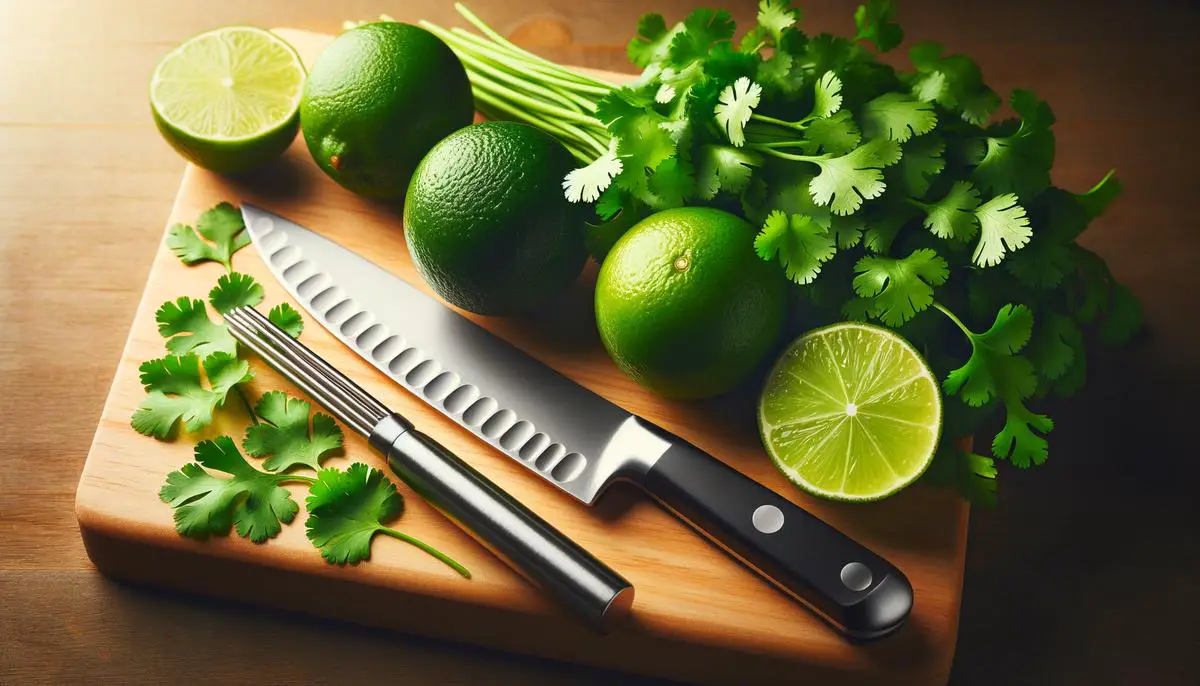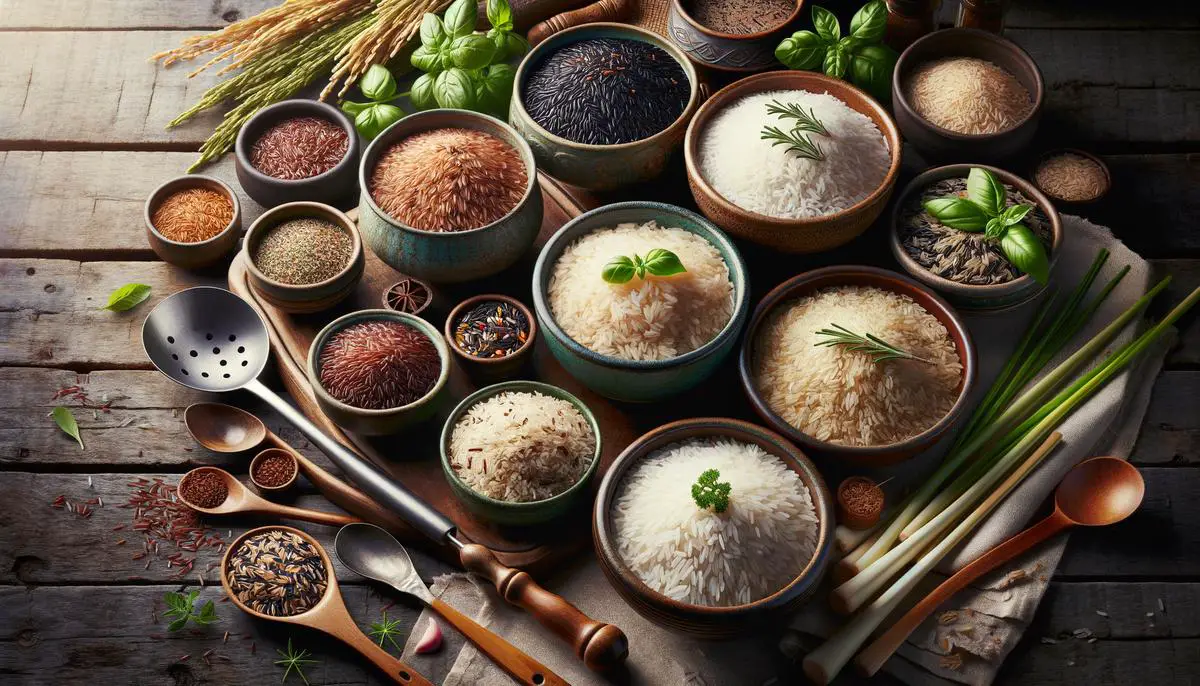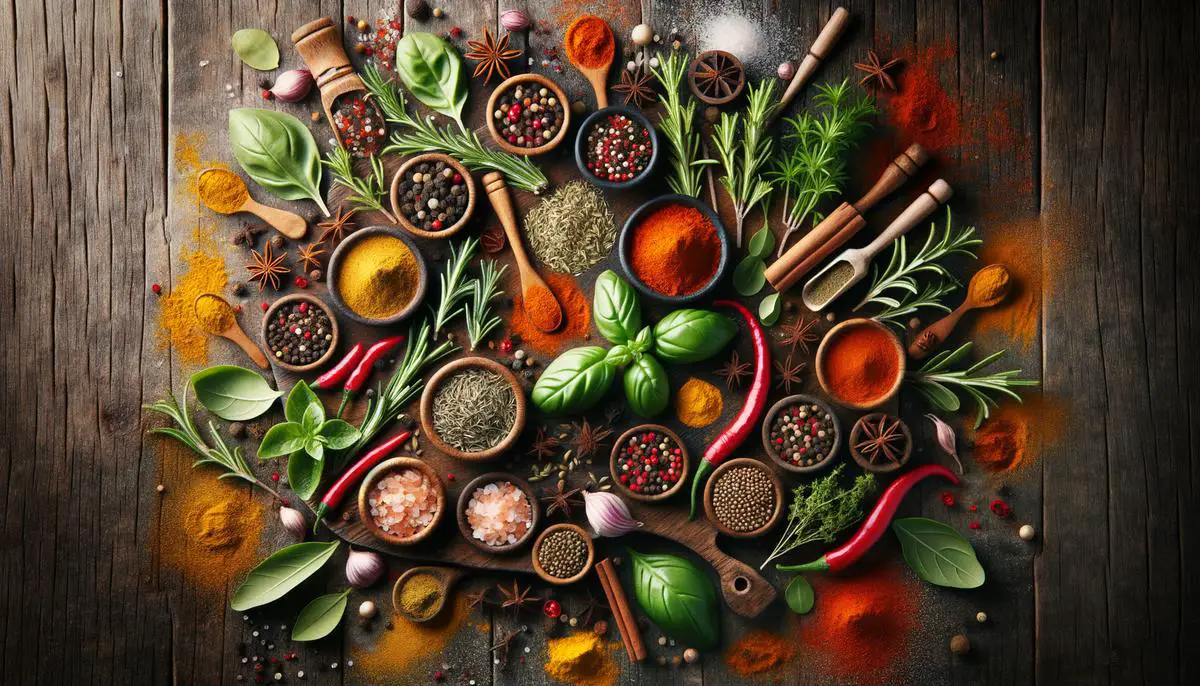
When it comes to creating memorable dishes, the devil is truly in the details. This article unpacks the art of preparing and cooking two key ingredients – lime and cilantro, and rice – with precision and care. By focusing on these elements, you’ll learn not just to cook, but to elevate your meals from simple to spectacular. Whether you’re a seasoned chef or just starting out, mastering these basics can dramatically enhance the flavor and presentation of your culinary creations.
Preparing Ingredients
Prepping Lime and Cilantro for Cooking
When your dish calls for a dash of zest or a sprinkle of green, lime and cilantro are the go-tos. Their prep is simple, but doing it correctly can turn a good dish great. Let’s cut to the chase.
Lime:
- Washing: Start by giving your lime a good wash under cold water. Even if you’re only using the juice, washing helps remove any surface dirt or bacteria.
- Zesting: If your recipe calls for lime zest, grab a zester or the smallest holes on your box grater. Lightly run the lime over it, taking care to only get the green part. The white pith underneath is bitter. One lime should give you about a tablespoon of zest.
- Juicing: Cut the lime in half across the width, not from end to end. If you have a juicer, great. If not, squeeze over a bowl, cut side up, to catch the seeds. One lime yields two to three tablespoons of juice. For more juice, roll the lime under your palm before cutting, pressing down firmly.
Cilantro:
- Washing: Cilantro can harbor dirt in its leaves. Fill a bowl with cold water, submerge the cilantro, and give it a gentle swish. Lift it out, change the water, and repeat until the water stays clear. Lay it out on a clean cloth or paper towels to dry or use a salad spinner.
- Separating: You want mostly leaves, minimal stems. Hold the bunch by the stems and use your other hand to lightly pull off the leaves. If a few small stems make it in, don’t sweat it—they’re tender and edible.
- Chopping: Once dry, gather the leaves into a loose pile. Using a sharp knife, run it through the pile in a rocking motion until you get the coarseness desired. For a finer chop, gather the chopped leaves into a tighter pile and go over them again.
Lime and cilantro, with their zesty and fresh profiles, can elevate a dish from mundane to memorable. Whether it’s the juice, zest, or finely chopped leaves, these simple prep steps ensure they contribute their best flavor to your culinary creations.

Cooking the Rice
Mastering perfectly cooked rice every time isn’t just about wishful thinking; it’s about precision, patience, and a few kitchen tricks up your sleeve. Whether you’re aiming for fluffy basmati to complement a curry or sticky rice for sushi, the basics remain the same. Here’s a breakdown that demystifies the process, turning you from a rice novice into a connoisseur.
Choosing Your Rice
First off, understand your rice. Different varieties like jasmine, basmati, or short-grain rice, have distinct textures and water requirements. Read the packaging for specific instructions, but here’s a general rule: white rice usually requires a 1:2 ratio of rice to water, while brown rice leans towards a 1:2.5.
Rinsing: The Unsung Hero
We’ve tackled washing cilantro, but rinsing your rice is just as critical. It washes away surface starches, preventing the grains from sticking together and resulting in that coveted separate, fluffy texture. Place your rice in a bowl, cover with water, gently swirl your fingers through it, then drain. Repeat this process until the water runs almost clear.
Soaking: An Optional Step with Impact
If time permits, soak your rice. This step, particularly beneficial for basmati, enhances texture and shortens cooking time. Submerge your rice in water for 30 minutes, then drain. This isn’t mandatory for every rice dish, but it’s a game-changer for some.
The Cooking Process: Where Magic Happens
Transfer your rinsed (and possibly soaked) rice into a pot. Add the appropriate amount of water. Remember, precision is key, so use a measuring cup. Add a pinch of salt to elevate the rice’s natural flavor. Bring the pot to a boil, then immediately reduce to a simmer. Cover with a tight-fitting lid—no peeking allowed. For white rice, simmer for 18 minutes; for brown rice, around 30 minutes. Simmering gently means the difference between perfection and a kitchen disaster.
Steaming: The final Touch
Once the cooking time is up, remove the pot from heat, but don’t lift the lid. The rice continues to cook in its steam, making for a tender finish. Let it sit, covered, for 10 minutes. This rest period is non-negotiable for achieving that perfect texture.
Fluff and Serve
Using a fork, gently fluff the rice to separate the grains. This step introduces air and breaks up any clumps, ensuring each grain stands out. Now, it’s ready to grace your plate alongside your favorite dishes.
Incorporating Lime and Cilantro for a Zesty Twist
Assuming you’ve followed the earlier instructions on prepping lime and cilantro, now’s the time to add that vibrant zing to your perfectly cooked rice. Squeeze in the lime juice to taste, sprinkle zest for that citrus aroma, and add the chopped cilantro for a fresh, herby kick. Stir gently to distribute evenly. This combination is particularly great with dishes that lean on the heavier, richer side, as it introduces a refreshing counterbalance.
And there you have it—a comprehensive guide to cooking rice that’s bound to impress. Remember, cooking rice is less about innate talent and more about understanding the grain, respecting the process, and applying these tried-and-true techniques. With practice, you’ll find this seemingly mundane staple transforming into a dish that can stand proudly on its own or complement your culinary creations with subtle grace.

Flavoring and Serving
Ensuring the flavors in your rice meld seamlessly is less about any singular monumental step and more about the cumulative effect of smaller, thoughtful actions throughout the cooking process. Here’s how to make sure each grain of rice not only carries its own weight in flavor but also contributes to the symphony of taste in your finished dish.
1. Salt Wisely:
Start with the basics: salt. It’s your flavor conductor. But like a maestro leading a concerto, the key is in the timing and measure. Salt your water or broth before adding the rice. A general rule is about ½ teaspoon of salt per cup of rice, but adjust according to your broth and personal taste. It’s easier to add more later than to fix an overly salty dish.
2. Broth vs. Water:
Water’s great, but broth is better. Choosing between water and a rich, aromatic broth can mean the difference between rice that’s merely a side dish and one that steals the show. Vegetable, chicken, or beef broth not only hydrates your rice but infuses it with layers of flavor right from the start.
3. The Magic of Aromatics:
Don’t stop at liquid. Aromatics like garlic, onion, or shallots can turn your rice from standard to spectacular. Sauté these in a bit of oil or butter until they’re translucent and fragrant before adding your rice to the pot. This step not only softens their bite but also coats your rice in undeniable flavor.
4. Toasting for Taste:
For an added nutty flavor, toast the rice gently with the aromatics until some grains start to turn golden. This not-so-secret technique is widely used across cultures and gives your rice an extra dimension of taste and a delightful texture.
5. Herbaceous Hints:
Fresh herbs can transform your rice, adding a burst of fresh flavor that dry spices can’t always achieve. Mixing in finely chopped herbs like cilantro, parsley, or even mint, after cooking preserves their vibrant color and potent essence. Remember, herbs are not a mere garnish but integral to your flavor building.
6. Acidic Accents:
A splash of acidity can brighten the entire dish and bring balance to the richer elements. Your lime juice isn’t just a flavor additive; it’s a flavor enhancer. Stir in lime juice after the rice has finished cooking, adjusting to taste. This step ensures the citrus notes stay bright and prominent.
7. Fat is Flavor:
A little fat goes a long way. Whether it’s a dollop of butter, a splash of olive oil, or coconut milk, adding fat towards the end of cooking enriches the rice, lending it a luxurious mouthfeel and carrying the flavors more cohesively throughout the dish.
8. Rest and Relax:
Finally, give your rice some rest. After cooking, remove it from heat and let it sit, covered, for about 10 minutes. This allows the rice to finish absorbing any residual moisture and lets the flavors meld together more thoroughly. A rest period transforms your rice from good to great by ensuring each grain is perfectly plump and flavored to the fullest.
By following these nuanced steps, you ensure that your rice is not just a background character but a fully developed star in its culinary story.

Mastering the art of cooking rice and preparing ingredients like lime and cilantro may seem minor, but it’s these small, meticulous steps that lead to the creation of truly exceptional dishes. By applying the techniques and principles outlined in this guide, you elevate your cooking, bringing not just nourishment, but joy and a sense of accomplishment to the kitchen. Remember, great cooking isn’t necessarily about complexity; it’s about appreciating every ingredient and every step in the process, turning the ordinary into the extraordinary.



